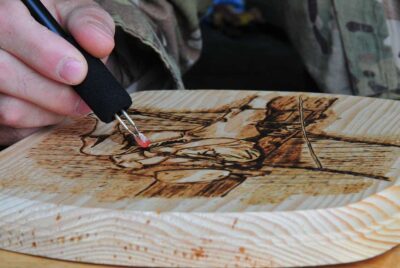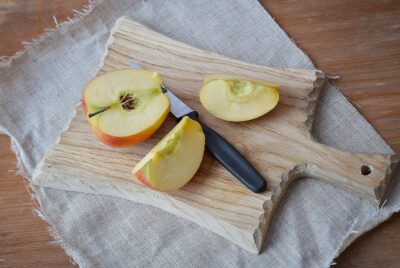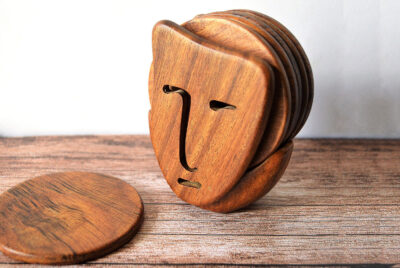Sculpt Your Imagination: A Fun Guide to the 10 Best Wood Carving Tools
Introduction
Wood carving is an art that turns plain blocks of wood into beautiful, intricate masterpieces. But here’s the catch—having the right tools can make all the difference between a frustrating experience and a smooth, enjoyable carving session. Whether you’re a beginner just dipping your toes into the world of wood carving or a seasoned carver looking for the best gear, this guide will walk you through the 10 best wood carving tools to help bring your creativity to life!
So, grab a cup of coffee, sit back, and let’s dive into the wonderful world of wood carving tools.
Why the Right Wood Carving Tools Matter
Precision and Ease of Use
Ever tried cutting a tough steak with a dull knife? Frustrating, right? The same goes for wood carving. A good carving tool should feel like an extension of your hand, gliding through the wood with minimal effort. When your tools are sharp and well-designed, you’ll spend less time struggling and more time actually creating. Plus, precise cuts mean fewer mistakes, which saves you from the headache of fixing uneven edges or deep gouges where you didn’t want them. Smooth tools, smooth carving—sounds like a win-win!
Enhancing Creativity and Detailing
When you have the right tools, your creativity can run wild. Imagine trying to paint a masterpiece with a single, oversized brush—pretty limiting, right? That’s what it feels like when you don’t have the proper carving tools. Fine-tipped tools help you carve intricate details, while broader blades let you shape larger sections with ease. Whether you’re working on a tiny figurine or a grand sculpture, using the right tool for the job lets you bring your artistic vision to life with precision and flair.
Safety and Comfort While Carving
Using the right tools minimizes the risk of accidents. Tools designed with ergonomic handles and sharp blades help you work efficiently without straining your hands or increasing the risk of slips and injuries.
Essential Wood Carving Tools for Every Carver
If you’re serious about wood carving, having the right tools is a game-changer. Think of it like cooking—you wouldn’t try to make a five-star meal with a single butter knife, right? The same goes for carving. Whether you’re a total newbie or a seasoned pro, these ten essential tools will help you carve with precision, creativity, and confidence.
1) Carving Knives – The Backbone of Wood Carving Tools
If wood carving had a VIP list, carving knives would be right at the top. These are your go-to tools for everything from shaping rough blocks of wood to adding those delicate final details. A good carving knife should have a sharp, durable blade and a handle that feels comfortable in your grip. Ever tried whittling with a cheap, dull knife? It’s like trying to cut a tomato with the back of a spoon—frustrating and ineffective. Invest in a quality carving knife, and you’ll notice the difference immediately.
2) Chisels – Adding Depth and Dimension
Chisels are like magic wands for woodworkers. With a few steady taps, you can transform a plain wooden block into a sculpted masterpiece. They come in different shapes and sizes, each designed to create unique cuts and textures. If you’re working on a project that requires sharp edges, smooth lines, or deep recesses, a solid set of chisels is a must. Just be sure to pair them with a mallet for better control—otherwise, you might end up applying too much force and taking off more wood than you intended!
3) Gouges – Perfect for Curved Cuts
If chisels are for straight cuts, gouges are their curvy cousins. These tools have a rounded blade, perfect for scooping out wood to create bowls, spoons, and decorative designs. They come in various sizes and sweeps, allowing you to carve everything from deep hollows to subtle curves. If you love creating fluid, organic shapes in your work, a set of gouges is non-negotiable. Plus, they make carving rounded edges so much easier—you won’t have to wrestle with a straight blade trying to force a curve.
4) V-Tools – Mastering Fine Details
V-tools are the secret weapon for anyone who loves adding intricate details to their carvings. Whether you’re engraving letters, adding texture to fur or feathers, or just refining your design, these tools help you get the job done with precision. The V-shaped blade cuts sharp, clean lines that stand out beautifully against the rest of your carving. If you’re serious about details, this is one tool you don’t want to skip!
5) Hook Knives – Ideal for Spoon Carving
Ever wondered how wooden spoons and bowls get that smooth, curved interior? That’s where hook knives come in. These uniquely shaped knives allow you to scoop out wood effortlessly, creating rounded hollows without awkward hand movements. If you’ve ever tried to carve a spoon with a straight knife, you know it’s a struggle—hook knives make it so much easier. Plus, they’re incredibly satisfying to use!
6) Mallets – A Helping Hand for Heavy Work
Sometimes, you need a little extra muscle. That’s where a mallet comes in handy. Whether you’re working with chisels or gouges, a good mallet helps drive the tool through the wood without damaging your hands. Wooden or rubber mallets are best—they provide just the right amount of force without being too harsh. If you’re tackling a big project, a mallet will save your wrists from unnecessary strain.
7) Sharpening Stones – Keeping Your Tools Razor Sharp
A dull tool is an accident waiting to happen. Not only does it make carving harder, but it also forces you to use more pressure, increasing the risk of slips and injuries. That’s why sharpening stones are essential. They keep your blades in top shape, ensuring clean, precise cuts every time. Think of them as your tools’ personal trainers—keeping them strong, sharp, and ready to work!
For a detailed guide on sharpening tools, check out this great resource.
8) Wood Rasps and Files – Smoothing and Refining
Once the heavy carving is done, it’s time for the finishing touches. Rasps and files help smooth out rough edges and refine your design. They’re perfect for softening sharp lines, evening out surfaces, and giving your work that polished, professional look. If you want your carvings to look clean and finished, don’t skip this step!
9) Gloves and Thumb Guards – Safety First!
Carving is fun—until you nick your finger with a sharp blade. That’s why safety gear like gloves and thumb guards are a smart investment. A good pair of carving gloves protects your hands from accidental slips, while a thumb guard gives you extra protection in those high-risk areas. Think of it like wearing a seatbelt—you might not always need it, but you’ll be glad you have it when something unexpected happens.
10) Bench or Carving Vise – Stability for Precision Work
Ever tried carving a wobbly piece of wood? It’s like trying to draw a straight line on a bumpy road—frustrating and bound to go wrong. That’s where a good bench vise comes in. It keeps your wood locked in place, so you can focus on carving instead of chasing your piece across the workbench. Especially for intricate details, even the tiniest movement can mess things up. If you want clean cuts and steady hands, securing your workpiece is a no-brainer. Trust me, your projects (and your sanity) will thank you!
How to Choose the Best Wood Carving Tools for You
Consider Your Skill Level
Are you just dipping your toes into wood carving, or have you been at it long enough to have a collection of wood shavings in every corner of your workspace? If you’re a beginner, stick to the essentials—carving knives, chisels, and gouges. No need to splurge on fancy tools just yet. More advanced carvers might want to add specialized tools like hook knives and V-tools to their arsenal. The best approach? Start simple, master the basics, and let your tool collection grow as your skills do. Your wallet will appreciate it, too!
Think About the Type of Wood You Work With
Not all wood is created equal, and picking the right one can make or break your carving experience. Softwoods like basswood and pine are perfect for beginners—they cut like butter and don’t fight back. On the other hand, hardwoods like oak and walnut demand sharper, tougher tools and a bit more elbow grease. The trick is matching your wood carving tools to the type of wood you’re working with. The right pairing makes carving smoother, easier, and way more enjoyable. Because let’s be honest, nobody wants to battle their wood just to make a simple cut!
Look for Quality and Durability
When it comes to wood carving tools, you really do get what you pay for. Cheap tools might seem like a bargain, but they dull quickly, break easily, and can make carving feel like a chore. Investing in high-quality steel blades, ergonomic handles, and solid craftsmanship is the way to go. Think of it like a good chef’s knife—you wouldn’t want to cook with a dull, flimsy blade, right? The same goes for carving. Quality tools last a lifetime and make every project feel smoother, easier, and way more fun.
Caring for Your Wood Carving Tools
Proper Cleaning and Maintenance
Let’s be real—wood carving tools aren’t cheap, so taking care of them just makes sense. A quick wipe-down after each use keeps dust and wood particles from building up, and a little oil on the metal parts now and then helps prevent rust. Think of it like brushing your teeth—small daily habits keep things in good shape for the long run. A well-maintained tool stays sharper longer, works better, and saves you from the frustration of trying to carve with a dull, neglected blade. Trust me, your tools (and your projects) will thank you!
Storing Tools the Right Way
Ever reach for a tool and find it dull, rusty, or—worst of all—missing? Proper storage keeps that from happening. Keep your wood carving tools in a dry spot, away from moisture that can cause rust. Protective sheaths for knives and chisels help prevent damage (and accidental nicks on your fingers). A well-organized tool roll or sturdy box keeps everything in one place, so you’re not rummaging around when inspiration strikes. Treat your tools right, and they’ll always be ready when you are!
Need storage ideas? Check out this guide on tool organization.
Final Thoughts
Wood carving is more than just a hobby—it’s a way to bring your creativity to life. Whether you’re shaping simple figures or carving out intricate designs, having the right tools makes all the difference. Start with the basics, choose quality over quantity, and most importantly, enjoy the process! There’s something incredibly satisfying about turning a plain block of wood into something unique with your own two hands. So grab your tools, find a good piece of wood, and start carving!
FAQs
- What is the best wood carving tool for beginners?
A basic carving knife is the best starting tool for beginners. It’s versatile and easy to use for various projects. - How often should I sharpen my wood carving tools?
It depends on use, but sharpening your tools after every few projects keeps them in optimal condition. - What is the best wood for carving?
Basswood is a popular choice for beginners since it’s soft and easy to carve. - Can I use regular knives for wood carving?
Not recommended! Regular knives don’t have the right blade shape or sharpness for precise carving. - Are wood carving gloves necessary?
While not mandatory, they provide extra safety, especially for beginners.




